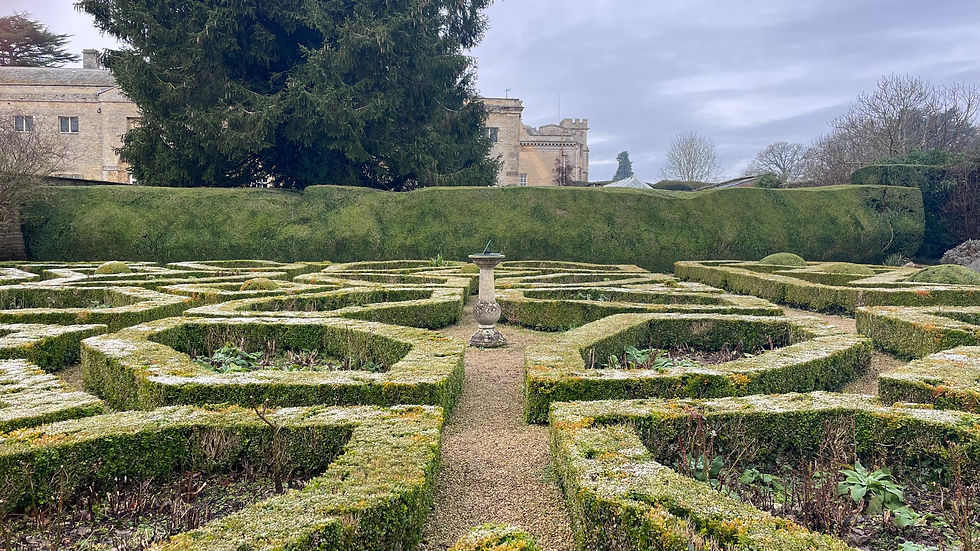Rousham Garden - When perfection strikes
- Anastasia D'hoore
- 7 jan
- 2 minuten om te lezen
For what it is worth, my impression of Rousham Garden.
This garden -and its ‘vegetants’- is more than 300 years old and was designed by William Kent (1685–1748). It is an early example of ‘landscape’ architecture, even before the era of Capability Brown. Literally, hills and rivers were reshaped to create this masterpiece. William drew much of his inspiration from his ‘Grand Tour’ to Italy, incorporating obvious elements such as temples and Roman sculptures, but also the ingenious water systems and the use of Bay Laurel, a plant commonly found around Lake Como at the time.
The 6th of January, a frosty morning, with the parking lot empty except for our car. Who would visit a garden at this time of year? Probably not many. (Plot twist: many will be proven wrong.) A self-service ticket machine, a symbolic £10 per ticket, no shop, no publicity, nothing except a pamphlet listing the breed of the chickens: Millefleur Barbu d'Uccle Bantam.
You enter the garden from the side, greeted by a lawn flanked by a massive Yew hedge and a striking view of the countryside. ‘Almost’ too perfect to be true. After passing the greenhouse, packed with Pelargoniums and a colonial Palm tree, you’ll find yourself in another lawn -even vaster and more impressive- enclosed by a Yew hedge five meters thick, can you imagine? The sense of space is overwhelming. The breathtaking view is yet sober and subdued. We strolled down the hill to the river for a walk filled with amazement and surprises.
At last, I was allowed to enter the passage in the Yew hedge that had earlier caught my attention. The compression of space -from the vast, open lawn through the Yew hedge and the beautiful blue gate -is genius. It leads to the vegetable garden, with a few remaining kales and fruit trees pruned with tremendous care and precision. In the cold house, all the plants are carefully tucked away for winter. A final treat awaits before leaving the walled garden: the rose garden. While there are no roses yet, the beautifully symmetrical boxwood design, with its octagons and rhomboids centered around a sundial, is stunning and contrasts perfectly with the flowing Yew hedge. Once again, perfection strikes.
Behind this seamlessly flawless masterpiece hides a tremendous depth of knowledge and careful understanding of this piece of land, something that could only be achieved through meticulous study. I imagine Kent knew every detail: the exact moments and locations of the sunrise, the contours of the land, the flow of the river…
The 6th of January, midst of winter, not many would visit a garden, but many would be proven wrong. The harmony and sobriety of this garden needs nothing more than a frosty morning. Although, I am very curious as to what the other seasons will bring.












